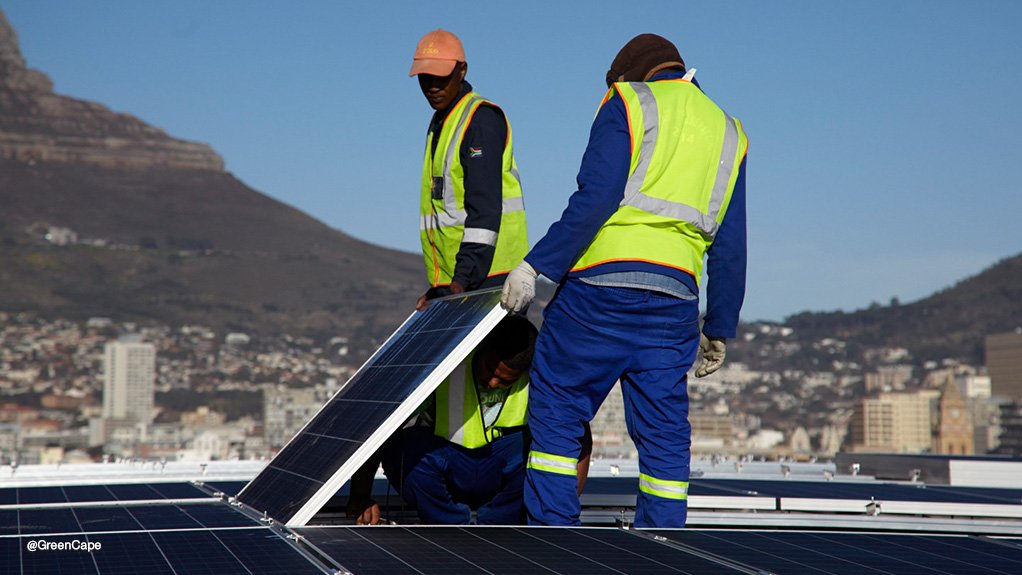The combination of public and private procurement of large-scale renewables in South Africa signals increased stability for manufacturers of key components, a new GreenCape report argues.
Published ahead of the release of the much-anticipated South African Renewable Energy Masterplan (SAREM), which will outline the country’s official approach to localising renewables value chains, GreenCape’s ‘Large-scale Renewable Energy’ report forecast that there will be about 32 GW of installed renewables capacity in South Africa by 2030.
It also estimates that 6 GW of solar photovoltaic (PV) and 4 GW of wind power could be added through private procurement alone by 2030. This would be in addition to public procurement, which was expected to add 2.6 GW of solar PV, 3.2 GW of wind and 3.7 GWh of battery energy storage systems over the same period.
Published as one of three sector-focused national studies released as part of its 2024 Market Intelligence Report, the non-profit organisation said the emergence of private procurement should help mitigate the boom-bust cycles associated with the market’s previous heavy reliance on public procurement.
The emergence of the private market has been facilitated by market reforms allowing distributed projects of any size to proceed without a licence, while the pace of procurement has been further accelerated by a sustained period of intense loadshedding, which has only recently abated.
Speaking at a public launch in Johannesburg, Ulrich Terblance, who helped author the large-scale renewables report, said that the public and private markets to 2030 would be relatively similar in size at about R200-billion apiece, which could be sufficient to stimulate domestic manufacturing investment.
He said the combined markets should also result in yearly deployments of about 2 GW, which should be sufficient to support the manufacture of certain components, even though such an installation rate was insufficient to address the overall supply deficit.
The report estimates the total market size for domestic renewables components at R42-billion over the period to 2030.
“Additionally, there is potential to manufacture components for both utility-scale and small-scale renewable energy projects, such as balance of plant or system components.
“Smaller-scale projects can provide a steady demand, reducing manufacturers’ vulnerability to fluctuations in utility-scale project demand and resulting in cost savings through economies of scale,” the report states.
GreenCape’s separate ‘Energy Services’ report highlights the recent surge in rooftop solar and battery installations by businesses and households and estimate the overall market size for the period to 2030 at R88.4-billion.
Energy programme manager Jack Radmore forecast that the small-scale market would continue to add between 1 GW and 2 GW despite the recent easing of loadshedding, but expressed caution about household affordability, with credit approvals by banks having slipped in recent months.
Nevertheless, he argued that the large- and small-scale markets combined were providing demand stability that had been absent previously and which represented an opportunity for domestic manufacturers.
Radmore noted that the South African government was working towards supporting the localisation of renewable-energy manufacturing through various industrial policy interventions, including SAREM, which was in its final draft.
Engineering News confirmed with a Department of Mineral Resource and Energy official that the SAREM drafting process had been finalised, but the official was unable to confirm when the document would receive ministerial sign-off and be released for public consumption.
GreenCape’s third market intelligence report, which focuses on electric vehicles, highlights the potential not only for electric busses, trucks and taxis but also motorcycles used for last-mile deliveries.
Report author Prian Reddy said the business case for electric mobility had risen overall in light of recent fuel hikes and supportive policy developments, and estimated the market size for electric motorcycles, three-wheelers and bicycles at 50 000 units.
He said the growth in e-commerce had increased demand for last-mile delivery services, where there was an appetite for more energy-efficient vehicles to reduce costs.
All three GreenCape reports were published with funding support from the UK government under the United Kingdom Partnering for Accelerated Climate Transitions programme.
EMAIL THIS ARTICLE SAVE THIS ARTICLE ARTICLE ENQUIRY
To subscribe email subscriptions@creamermedia.co.za or click here
To advertise email advertising@creamermedia.co.za or click here











